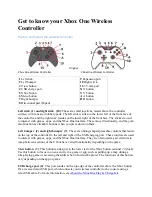
D-Link DWC-2000 User Manual
100
Section 4 - Advanced WLAN Configuration
Field
Description
Ignore Broadcast
If a wireless client broadcasts probe requests to all available SSIDs, this option controls
whether the AP will respond to the probe request.
ON = Prohibits the AP from responding to client probe requests.
OFF = Allow the AP to respond to client probe requests.
VLAN
Enter a VLAN ID. Be sure this VLAN ID has been created (Network > VLAN > VLAN Setting)
MAC Authentication
If enabled, wireless clients must be authenticated by the AP in order to connect to the
network. To use MAC authentication, configure the client MAC addresses in one of the
databases: Local or RADIUS. In the database, set a default action to either accept or deny
that client or use the global action configured.
MAC authentication is useful in networks that operate in Open mode to grant or deny
access to clients with specific MAC addresses. MAC Authentication can also be used in
conjunction with 802.1X security methods, in which the MAC Authentication is done
prior to the 802.1X authentication.
Authentication Type
If Captive Portal Type = Permanent User and Authentication Server = RADIUS server,
select the authentication type: PAP, CHAP, MSCHAP, or MSCHAPV2.
Redirect
Select the HTTP option in the
Redirect
field to redirect wireless clients to a custom Web
page. When redirect mode is enabled, the user will be redirected to the URL you specify
after the wireless client associates with an AP and the user opens a web browser to access
the Internet. The custom Web page must be located on an external web server and might
contain information such as the company logo and network usage policy.
Note:
The wireless client is redirected to the external Web server only once while it associated
with the AP.
Redirect functionality allows you to implement captive portal functionality; a captive
portal is often used at Wi-Fi hotspots to provide branding for the hotspot provider and/
or display a legal disclaimer, which the user can click-through to access the Internet.
HTTP=HTTP Redirect is enabled
None=HTTP Redirect is disabled
Redirect URL
If Redirect = HTTP, enter the URL where all initial HTTP accesses should be redirected to.
This field is accessible only when HTTP is selected as the redirect type.
Wireless ARP
Suppression Mode
Enable the mode to allow APs to reduce the number of broadcasted ARP requests on the
wireless interfaces. Reducing broadcasts helps conserve power on the wireless clients.
The wireless clients that use power-save mode must wake up and use more power when
they detect broadcast frames.
Note:
Enabling this feature slightly degrades AP packet forwarding performance due to extra
packet filtering to find DHCP packets and extra processing for ARP request and reply packets.
Networks that do not use IPv4 should not enable this feature.
L2 Distributed
Tunneling Mode
The distributed L2 tunneling mode supports L3 roaming for wireless clients without
forwarding any data traffic to the Unified Wireless controller. Use the menu to enable or
disable the mode.
L2 tunneling is recommended when the Unified Wireless controller does not support
hardware forwarding acceleration or hardware-based L2 tunnels.
Note:
1 - When there is only one controller managing all APs and that controller goes down, all APs shut
down their radios and the tunnel is terminated. After the controller recovers and the AP becomes
managed again, the client that was previously tunneling traffic will re-associate and obtain an
IP address on the network where its currently located. This IP address will be different from the IP
address it was using when it was tunneling, and the traffic will not be tunneled.
2 - If the network has peer controllers and the tunnel is established between the APs managed by the
peer controller then, when a controller managing the home AP fails, the controller managing the
association AP detects the failure and terminates the tunnel. At this point the client is disassociated.
When the client re-associates it obtains a new IP address.
3 - If the controller managing the association AP fails, then the scenario is the same as in item 1
above. The AP takes down all radios and the clients disassociate.
















































